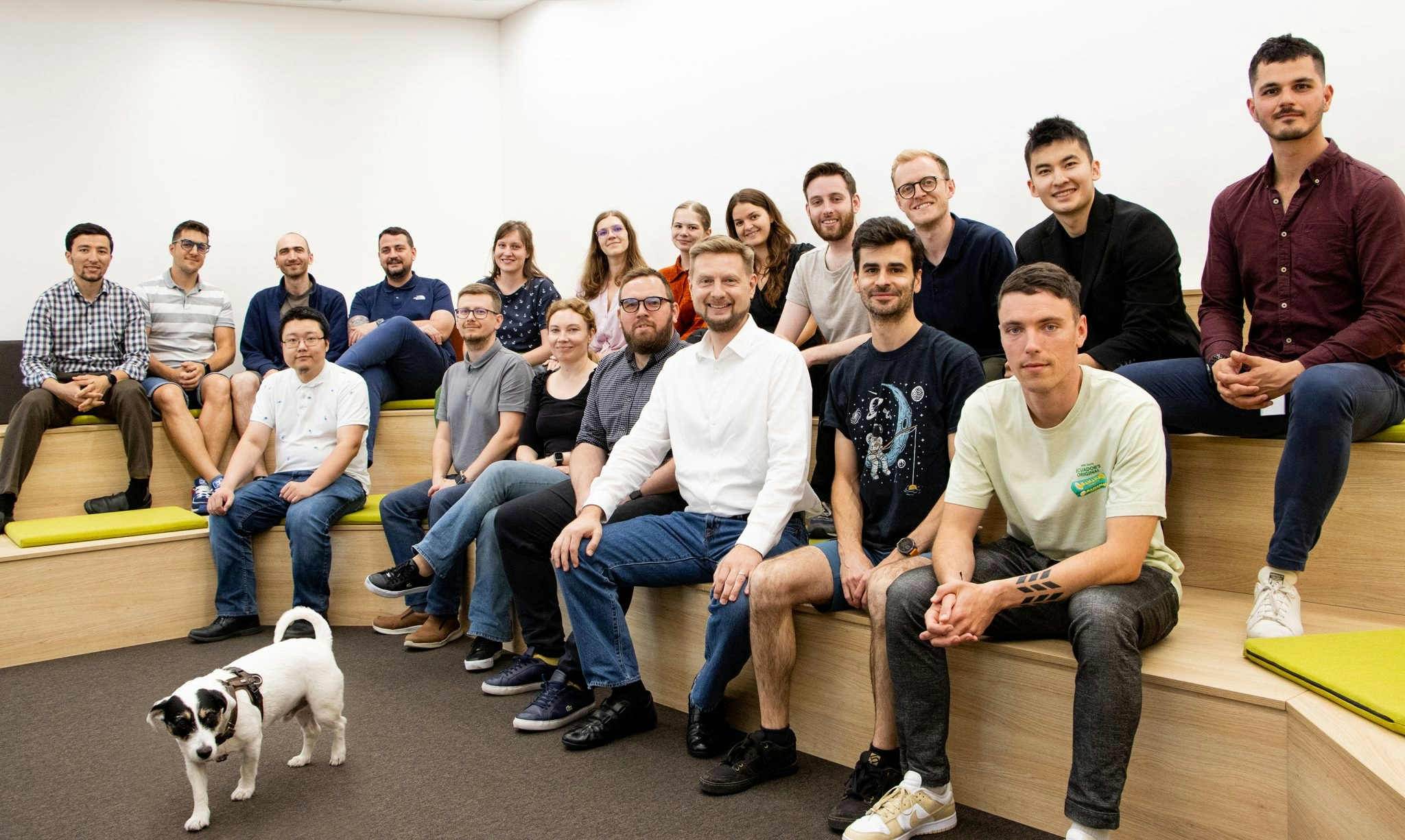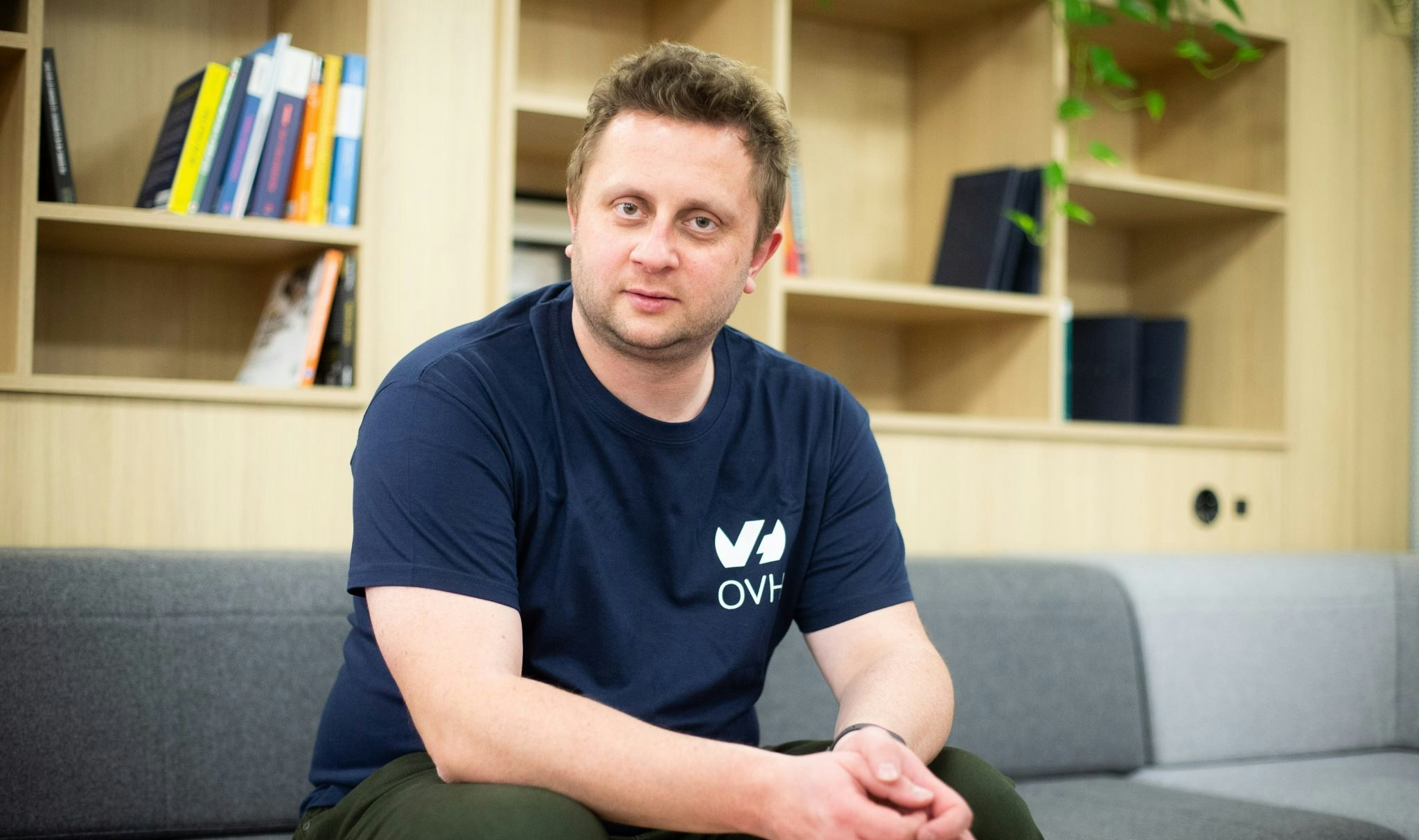He is not paid and he does not work for the company, but 39-year-old Simon Mikkelsen has taken more than 1.1m photos of streets of Denmark for Mapillary, the Swedish startup that is taking on Google's Street View with a community-led approach.

Motivated primarily by a desire to record his neighbourhood for posterity, the Danish software engineer and photographer says he has covered an incredible 12,000 km in his work. And he is not even the most enthusiastic volunteer.
“I am in no way the top contributor,” he tells Sifted. “I think I am among the top 50. Some people have uploaded 10m images.”
Fans like Mikkelsen are crucial to the business case of Mapillary, which has an offbeat strategy to challenge the likes of Google and Apple in getting the kind of street-level data on cities and elsewhere which might one day help self-driving cars drive around or robots deliver packages to our doors.
Mapillary can be described as a platform in which every uploaded image has the data on where it was taken and what is in the picture automatically extracted and analysed.
While other companies send out fleets of vehicles with cameras and other sensors to gather images of the roads and keep maps updated, Mapillary has software that can ingest pictures from using any kind of camera, usually a smartphone, and relies on crowd-sourced contributors.
“It is not as crazy as it sounds, you don’t go around and press a button for each picture, that is all automatic. The most work is required on geotagging when you want to use five cameras at the same time or a 360 degrees camera,” Mikkelsen adds.
Thanks to these contributors, Mapillary is set to hit the milestone of 500m images on its platform within a few weeks and has raised around $25m from the likes of Atomico and Sequoia Capital.
But it all relies on creating a community of enthusiasts willing to work for free — which is no easy feat. How do they do it?
Creating a community
The key to understanding why people would go out of their way to take pictures of their surroundings for Mapillary is to grasp the company’s difference from Apple or Google maps.
In essence, instead of hoarding the data that is extracted from the images that their community collects, Mapillary is licensing it to anyone that needs it/pays for it.
This is directly the opposite of what Google allows. Google actually forbids you to use their images to edit external data sets.
Apart from mapping companies, this could be the Red Cross using the data in natural disaster areas, cities that are inventorying their accessibility routes or even a department of transportation that needs to extract information about their highways.
“What people use that data for, is to edit and fix maps,” says Jan Erik Solem, one of the founders of Mapillary. “It could be maps and data that the city or the bigger mapping companies have."
“This is directly the opposite of what Google allows. Google actually forbids you to use their images to edit external data sets,” he adds.

This different model has caused a lot of excitement in the mapping community, many of whom believe in the project.
“In Japan, they organise Mapillary conferences without our involvement,” says Solem. “But the community organises it with speakers and program and everything. Every week there are events where people do mapping parties and photo mapping; there are grassroots initiatives all over the world.”
There is a better way to collect images, there is a better way to extract data from them and there is a better way of sharing this information
One of the reasons why Mapillary was founded by Solem and three cofounders in 2013, was because the old style of mapping couldn’t produce the magnitude of images needed.
However, there were other problems too, namely that there was no collaboration in the sector between different companies doing mapping.
“The ones who did collect data with mapping vans didn’t share it with others so it wasn’t accessible,” says Solhem. “So we said, there is a better way to collect images, there is a better way to extract data from them and there is a better way of sharing this information with everyone so that you maximise the usefulness of it.”
Instead of using fleets of mapping vans, (i.e vans with photo equipment on the roof), Mapillary solely relies on the communities that they serve.
Was it planned?
Solhem says that he was not sure that this community would take off — but they quickly found out.
“We noticed this early on. We launched Mapillary at a very early stage, it was kinda scrappily put together by the four cofounders and we did that to observe and see what people did with it. What would people use it for, who would contribute and what are the dynamics around mapping together? So very early on we observed how people organised events deliberately to go out and takes pictures”, Solem says.
We connect the images across every contributor and we extract data from the images using computer vision
Mikkelsen says he first found out about Mapillary through a tech magazine back in 2014 and has since then been taking photos to upload for the platform.
“By then one used Google Street View and although they cover a lot of streets, it doesn’t have the back routes and the scenery around them,” he says. “Also, it could be as much as 9 years between updates to certain areas. As well as you had to agree to their terms. Instead, Mapillary had a common license.”
In Japan, they organise Mapillary conferences without our involvement; there are grassroots initiatives all over the world
Whilst in the future, cars with multiple sensors will provide much of the photos for Mapillary, until then individual contributors and communities will still be the number one source of images.
Solem says: “People contribute images because we connect the images across every contributor and we extract data from the images using computer vision. They are self-motivated to contribute because we help them solve some kind of problem, either with the images or with the data that we extract. People are driven by all sorts of things.”

Mikkelsen is driven both by updating maps but also creating historical data for the next generation.
“It is first and foremost one source of information and updating the open street map. But I am 39 and I would really like to have my neighbourhood documented so that my children can go back and look what the area looked like growing up,” he says.
Self-driving cars
This enthusiasm is helping Mapillary. The company has seen its revenue doubled to €1.8m in 2018 and has managed to attract investors like the London-based venture capital firm Atomico and Silicon Valley-based Sequoia.
Investors are interested in its potential uses in the automotive industry — potentially for self-driving cars — but also when drone and robot delivery services need high definition maps.
Out of the five-year history of the company, it really started 18 months ago when the automotive segment took an interest.
Mapillary has already struck partnerships with companies such as Amazon, Toyota and BMW; the last one has also invested in Mapillary.
“Out of the five-year history of the company, it really started 18 months ago when the automotive segment took an interest,” says Solem. “And whatever the world will look like in the future, we have the data, we are there. And we will discover other verticals in the future as some of these spaces mature.”


